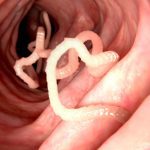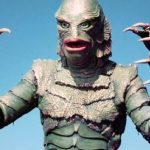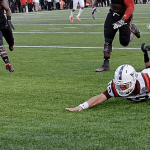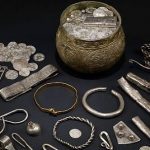 Technology
Technology  Technology
Technology  Humans
Humans 10 Everyday Human Behaviors That Are Actually Survival Instincts
 Animals
Animals 10 Animals That Humiliated and Harmed Historical Leaders
 History
History 10 Most Influential Protests in Modern History
 Creepy
Creepy 10 More Representations of Death from Myth, Legend, and Folktale
 Technology
Technology 10 Scientific Breakthroughs of 2025 That’ll Change Everything
 Our World
Our World 10 Ways Icelandic Culture Makes Other Countries Look Boring
 Misconceptions
Misconceptions 10 Common Misconceptions About the Victorian Era
 Mysteries
Mysteries 10 Strange Unexplained Mysteries of 2025
 Miscellaneous
Miscellaneous 10 of History’s Most Bell-Ringing Finishing Moves
 Technology
Technology Top 10 Everyday Tech Buzzwords That Hide a Darker Past
 Humans
Humans 10 Everyday Human Behaviors That Are Actually Survival Instincts
 Animals
Animals 10 Animals That Humiliated and Harmed Historical Leaders
Who's Behind Listverse?

Jamie Frater
Head Editor
Jamie founded Listverse due to an insatiable desire to share fascinating, obscure, and bizarre facts. He has been a guest speaker on numerous national radio and television stations and is a five time published author.
More About Us History
History 10 Most Influential Protests in Modern History
 Creepy
Creepy 10 More Representations of Death from Myth, Legend, and Folktale
 Technology
Technology 10 Scientific Breakthroughs of 2025 That’ll Change Everything
 Our World
Our World 10 Ways Icelandic Culture Makes Other Countries Look Boring
 Misconceptions
Misconceptions 10 Common Misconceptions About the Victorian Era
 Mysteries
Mysteries 10 Strange Unexplained Mysteries of 2025
 Miscellaneous
Miscellaneous 10 of History’s Most Bell-Ringing Finishing Moves
10 Surprising Animals That Have Been Successfully Cloned
From Star Wars to Jurassic Park, the concept of cloning has long captured the imagination of audiences. However, it has branched out from science fiction and become a part of everyday reality. Many have heard about Dolly the sheep, who arguably remains the most famous cloned animal. However, scientists have successfully cloned many more interesting species since then for a number of different reasons. Here are ten surprising animals that have been successfully cloned.
Related: Top 10 Conspiracy Theories Involving Clones
10 Cats
In 2001, a few years after Dolly the sheep, scientists cloned the first pet. A team of biomedical scientists at Texas A&M took cells from a cat called Rainbow, zapped them with electricity, let them grow in a Petri dish, and then transferred them into a surrogate mother. The result was C.C. Some people believe her name stands for Copy Cat or Carbon Copy. She was genetically identical to Rainbow, although she had a different coat pattern and temperament. She survived for 18 years until 2020.
Since their success over twenty years ago, the business of cloning pets has boomed. This has been helped by the rise of pet influencers online. For example, when a young cat with 85,000 Instagram followers suddenly died in 2017, its owner sent some of its skin cells to a pet cloning company. Four years later, she received a genetically identical clone. According to the cloning company, cloned pets are basically identical twins of the original animal.[1]
9 Dogs
Celebrities have gotten into the pet cloning trend recently. In 2018, Barbara Streisand cloned her dog Sammie twice. That same year, a pet influencer had six clones of her Instagram-famous dog made after the original died in a tragic accident. The ability to clone dogs dates back to 2005 when a research team from South Korea successfully produced Snuppy.
Snuppy was produced using a single cell from the ear of an Afghan hound. He was the only long-term survivor out of the 1,095 eggs the team implanted in surrogates, making him something of a scientific miracle at the time. Other teams also attempted to clone dogs but found a dog’s limited breeding period and the difficulty of extracting eggs too challenging. Once they got the hang of it, though, South Korea began cloning dogs to use in services such as sniffing for drugs in airports.[2]
8 Arctic Wolves
One potential use of cloning is helping endangered species to survive. That was the motivation in 2022 when scientists in Beijing presented the first surviving Arctic wolf clone. Maya is a grey-brown pup of the wolf species, which is normally found in northern Canada. She was created using the same technique as Dolly the sheep in 1996, the first-ever cloned mammal.
Out of 85 cells implanted into surrogates, Maya was the only survivor. Her species is considered low risk for extinction. Still, climate change threatens its food supply, and human developments such as roads and pipelines are increasingly being built on land the wolves inhabit.[3]
7 Black-Footed Ferrets
The first endangered U.S. animal was cloned in 2021. The population of black-footed ferrets on the North American continent dwindled so much that in 1979, scientists declared the species extinct. When a farmer discovered a small population of them on his land two years later, a breeding program was started. However, the species has remained on the brink of extinction ever since.
The population was so small the breeding program had trouble achieving genetic diversity. Elizabeth Ann, the cloned ferret, was produced from the cells of another black-footed ferret who lived 30 years earlier. Scientists hope she will be the first of several clones that can help diversify the stock of the highly endangered species. Without genetic diversity, animals become more prone to diseases and genetic abnormalities.[4]
6 Bantengs
The first ever clone of an endangered species was a banteng, a type of wild cow native to the Indonesian island of Java. The clone was born in 2003 and created using frozen tissue from a banteng, which died more than twenty years earlier. Out of 16 surrogate pregnancies, there were only two births, but the other banteng did not make it. Still, the project was more successful than earlier efforts in 2001 to clone an endangered Asian ox called a gaur. The clone was born but died just two days later.
Although some scientists were skeptical about the health of the clones and have pointed out that some cloned animals die much earlier than their naturally reproduced counterparts, the banteng researchers explained how the endangered banteng population needs genetic diversity. So long as the clones can produce normal offspring, the project could meet its ultimate goal of helping the species.[5]
5 Przewalski’s Horses
Przewalski’s horses are said to be the last truly wild horses. By 2020, they were reported to be extinct in the wild, with a small population surviving in zoos and reserves. Like other endangered species, their numbers shrunk so much that the remaining population lacked genetic diversity. All surviving Przewalski’s horses descend from the same 12 ancestors. Luckily, researchers at the Frozen Zoo in San Diego had the cells of a Przewalski’s horse from four decades earlier among its collection of 1,100 other species.
The cells contained DNA that was rarely found in the surviving population. By fusing the cells with the egg of a surrogate mother and removing the egg’s nucleus, scientists were able to create the first clone of the species, called Kurt. Kurt was born in Texas in August 2020, and it is hoped once he reaches breeding age, he will be an important part of the plan to eventually return Przewalski’s horses to the wild.[6]
4 Pyrenean Ibex
Some clones have been created using cells that were frozen decades ago. This creates the possibility of resurrecting species that go extinct after their cells have been gathered and frozen. Well, this happened on one occasion in 2009, but the success was very short-lived. The animal was a Pyrenean ibex, also known as a bucardo. These were a subspecies of Spanish ibex whose population had been decimated by hunting throughout the 19th and 20th centuries.
The last of them died after being hit by a falling branch in 2000, but not before samples of his skin cells had been frozen. These were used to make 208 embryos, which were implanted into surrogate Spanish ibexes and goat-ibex hybrids. There was only one successful birth, but the clone had lung problems and died of respiratory failure minutes later.
Scientists said abnormalities are common and seem to happen when DNA is shifted between cells. They were also quick to stop people from thinking we will soon be cloning long-extinct species like the woolly mammoth, explaining that current methods of cloning require a very similar surrogate to carry the embryo.[7]
3 Cows
One of the most successfully cloned mammal species is cows, and they continue to be cloned for several different reasons. By 2003, cows were being cloned and genetically engineered, so their milk produced proteins required to manufacture pharmaceuticals. A different industry that also saw potential in genetically engineered clones was cheese-making.
In 2003, scientists from New Zealand created cow clones with higher-protein milk, which could speed up the cheese-making process. This was achieved by putting extra genes for two milk proteins into the cow cells before they were implanted into surrogates. A similar technique was used by Argentine scientists in 2011 to create Rosita ISA, a cloned cow that produced human-like milk. The researchers’ goal was to increase the nutritional and anti-bacterial content of cows’ milk.[8]
2 Camels
Countries in Asia and the West are not the only ones who got into the cloning craze of the 21st century; the Middle East also had success cloning mammals. In 2009, a female one-humped camel clone called Injaz was born in the United Arab Emirates. She was genetically identical to a camel who died four years earlier. At the time, the researchers expressed their hope that they had found a solution that would help them preserve the valuable genes of racing and milk-producing camels. Little did they know that by 2023, it would become their full-time job.
However, the demand for dozens of camel clones each year is driven by a different motivation—camel beauty pageants. These contests are so popular in the Gulf states that prizes can be millions of dollars. Cloning camel beauty queens has become a big business for scientists, along with cloning racers and pets. They are also using their techniques to help endangered species, such as wild two-humped Bactrian camels.[9]
1 Monkeys
2000 saw the birth of the world’s first monkey clone. Cloning a primate was a significant advance and seemed especially quick, given Dolly the sheep was cloned only four years earlier. However, the technique used was different from Dolly’s. Tetra, the cloned monkey, was created by embryo splitting. That is when an embryo is split into four parts. Scientists essentially replicate what happens naturally during pregnancy to produce twins, triplets, and quadruplets. Their success in doing this raised concerns about the technology being used to create human clones. In fact, Tetra’s case was fraught with ethical concerns.
Cloning by embryo splitting can result in multiple genetically identical clones born around the same time, which can be raised in highly controlled settings, making them excellent subjects for experiments. Being closely related to humans means they could be a valuable way to study human diseases and produce life-saving cures more quickly. Many people object to the raising of animals for the sole purpose of experimentation, especially more cognizant ones like monkeys.[10]








